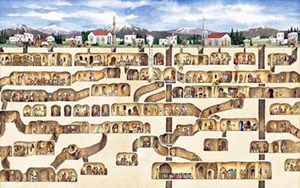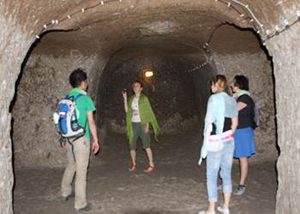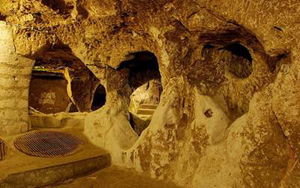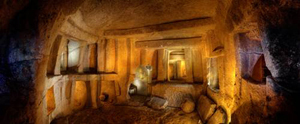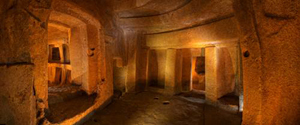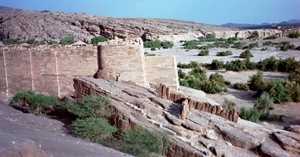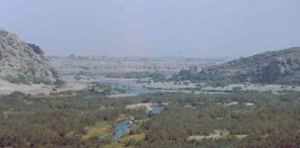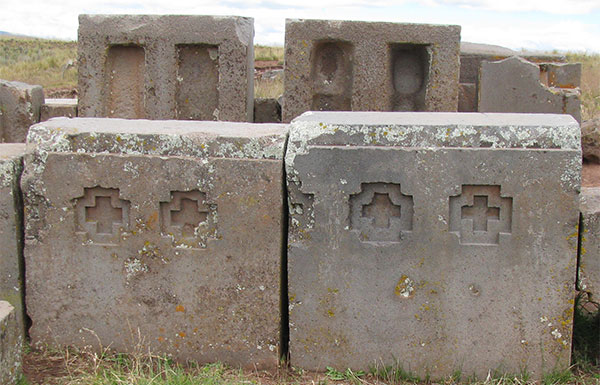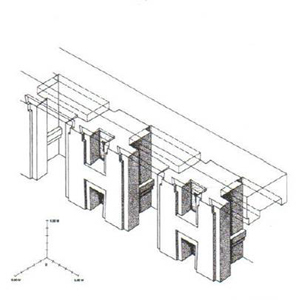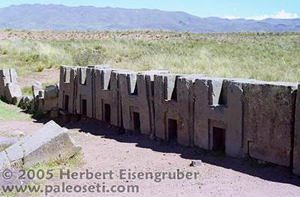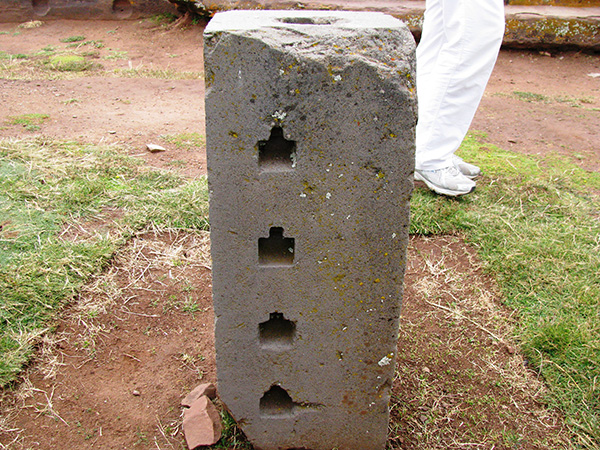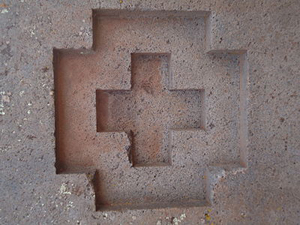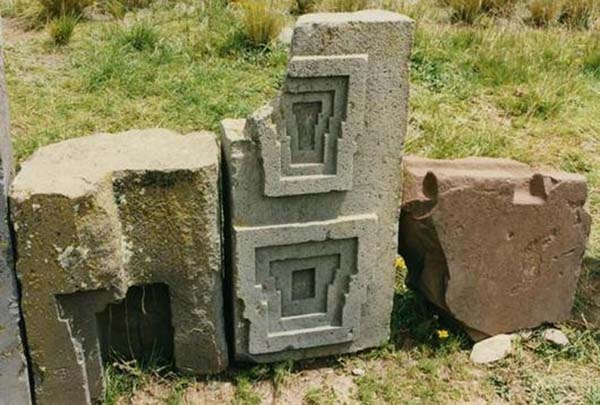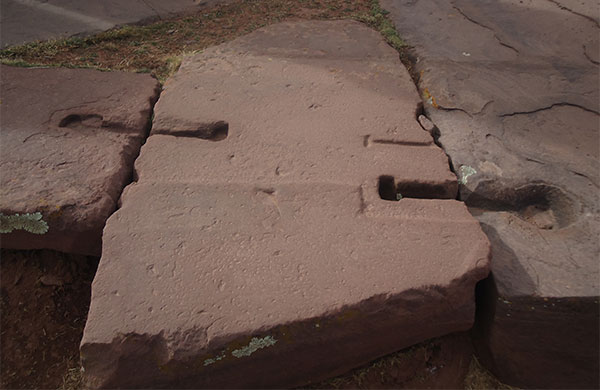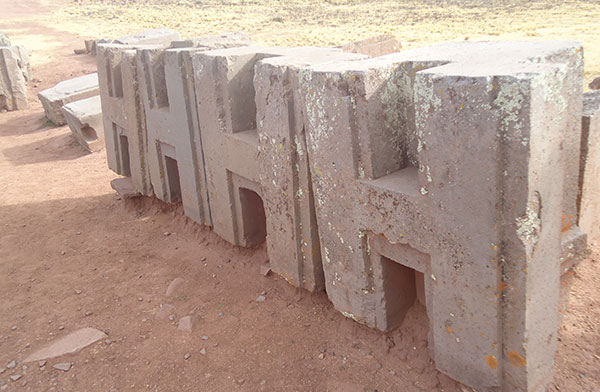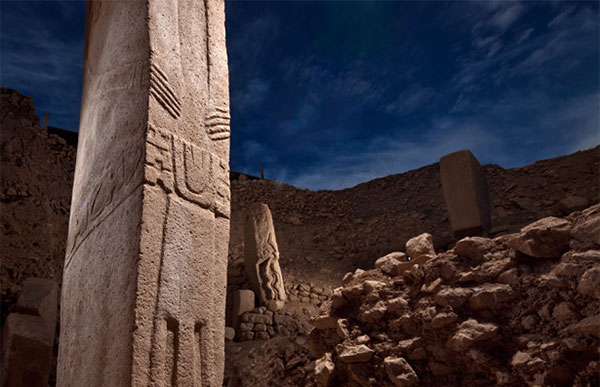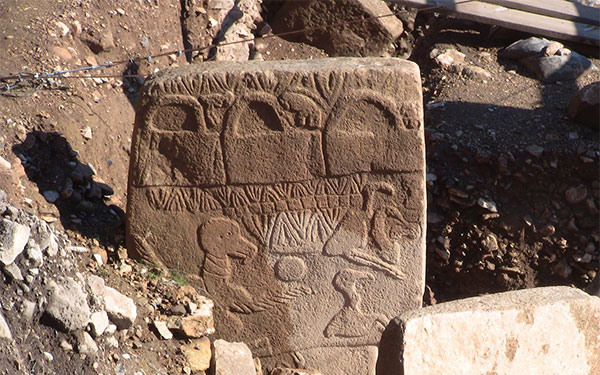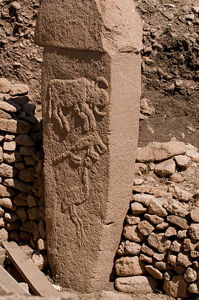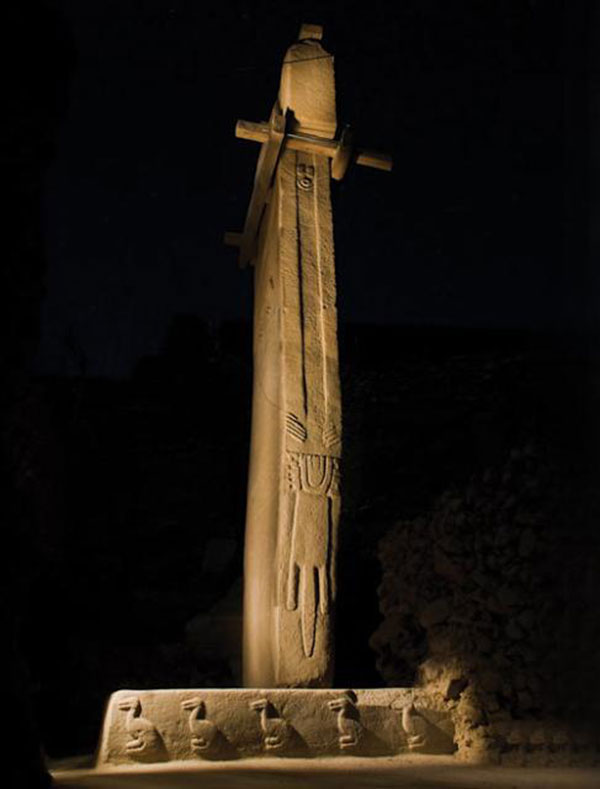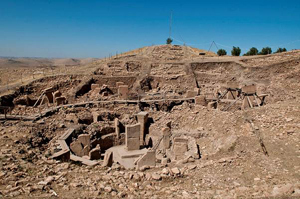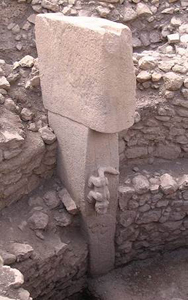5 Shockingly Advanced Ancient Buildings That Shouldn’t Exist… Even If Built Today
HISTORY, 27 Apr 2015
Eric Yosomono, Welldone Quibranza & Alaric Penname – TRANSCEND Media Service
We either need to stop underestimating ancient cultures or it’s time we rule out primitive tools and hop on the alien bandwagon. These five ancient structures were not built by loincloth-wearing savages…
The achievements of ancient cultures tend to be woefully unappreciated — we think of the people as loincloth-wearing savages, and when we’re proven wrong by some impressive feat of engineering, we just make a bunch of documentaries about aliens. But the engineers of times past were nothing to sneer at, and some of their accomplishments make ours seem slightly embarrassing.
#5. Derinkuyu’s Massive, Ancient Underground City
Derinkuyu’s underground city was discovered in the 1960s in Turkey, when a modern house above ground was being renovated. Much to the relief of everyone present, the 18-story underground city was abandoned and not swarming with mole people.
Hidden for centuries right under everyone’s noses, Derinkuyu is just the largest of hundreds of underground complexes built by we’re-not-sure-who-exactly around the eighth century B.C. To understand just what’s so phenomenal about this feat of engineering, imagine someone handing you a hammer and chisel and telling you to go dig out a system of underground chambers capable of sustaining 20,000 people. And not one of those fancy modern chisels, either — we’re talking about something dug with whatever excavating tools they had 2,800 years ago.
The city was probably used as a giant bunker to protect its inhabitants from either war or natural disaster, but its architects were clearly determined to make it the most comfortable doomsday bunker ever. It had access to fresh flowing water — the wells were not connected with the surface to prevent poisoning by crafty land dwellers. It also has individual quarters, shops, communal rooms, tombs, arsenals, livestock, and escape routes. There’s even a school, complete with a study room.
Even now, the site hasn’t been fully excavated, so we haven’t found the golf course or the football stadium yet.
#4. Hypogeum of Hal-Saflieni Has Bizarre Acoustic Properties
On the island of Malta is a prehistoric underground megalithic structure known awesomely as the Hypogeum of Hal-Saflieni, which sounds like the title of Terry Gilliam’s next movie. It was discovered by accident in 1902 when some workers were digging a hole and broke through the ceiling. Oh, and they also found about 7,000 skeletons all clustered near the entrance. So, that’s creepy.
Since most humans inherently lack common sense, the workers decided to take a look around, instead of fleeing from whatever it was that 7,000 people clearly died trying to escape. Luckily, rather than having their faces melted off by some Indiana Jones MacGuffin, they found something truly astonishing.
The three-level underground structure is made entirely out of megalithic stones, and was built who knows when. What surprised people even more was when they found out that male voices could reverberate throughout the entire complex if the person was standing in a certain spot. But here’s the kicker — the effect only worked if the speaking voice was in the 95 to 120 Hz range, so women’s voices don’t usually generate the same effect. Whoever built the Hypogeum actually invented sexist architecture.
It gets weirder: If you’re a man chanting at roughly the 110 Hz frequency, the entire temple complex turns into this bizarre trance-inducing room that seems able to stimulate the creative center of the human brain.
Simply put, by merely standing inside that temple complex while someone was chanting in the proper location, you actually enhanced your religious experience. And that’s all we really know about this place. We have no idea who built it or how they pulled it off. All we know for certain is that they had a knowledge of acoustics that is still baffling scientists to this very day. Our modern attempts at recreating the effect in our own basement have varied in success, depending on how much whiskey we’ve consumed beforehand.
#3. The Ancient Marib Dam Worked for 1,000 Years
Yemen is a country rich in dust and poor in water, which is why in ancient times the empire that controlled it, the Sabaens, built a great dam in 750 B.C. Because subjugating a populace is thirsty work.
The dam, which was cheated out of being one of the “official” Seven Wonders of the World, was nevertheless regarded one of the greatest feats of engineering of the pre-industrial age. After all, building a dam isn’t like putting a bunch of stone monoliths in a big circle. You have to have canals, gates, sluices, and spillways, and the whole thing has to be waterproof, or else everybody living on the wrong side of it might wake up drowned one morning.
The Sabaens managed all this before the existence of concrete, and their dam stood for over 1,000 years. In comparison, modern dams built with our advanced technology last for around 50 years, or 100 if they’re really something.
The Great Dam of Marib was about 2,000 feet long (almost twice as long as the puny Hoover Dam), and while it stood, it converted ancient Yemen into a fertile oasis, what was then known as the kingdom of Sheba (of “Queen of Sheba” fame). Because everything has to fall down eventually, the dam finally burst around A.D. 600, bringing down much of the agriculture system and converting the area into the sandy fun park it is today.
#2. Pumapunku Is Made of Bizarrely Complex Interlocking Stones
Pumapunku is a city built by the Tiwanaku people of ancient Bolivia. What sets it apart from just any old ancient city is the almost weird precision of the stonework that would make modern builders envious.
Using crude technology, they pioneered a kind of construction that used hundreds of large, identical building blocks to make buildings like you and I would make a house out of LEGO. To make cuts as straight and precise today, we’d reach for some kind of laser cutter. They used chisels and rulers.
To keep the buildings structurally sound, they even used a form of metal I-cramps similar to what we would use today to keep the giant blocks in place in case of an earthquake.
These aren’t just little cinder blocks, either. The largest of the stones is 25 feet long and 17 feet wide, and has been estimated to weigh around 130 tons (for comparison, that’s only around 20 or so standard semi trailers). Yet somehow, with no technologies like wheels, cranes, or even a writing system, the Tiwanaku people moved these giant rocks to the Pumapunku site and shaped them into perfect, complex forms.
Like all good mystery civilizations, the Tiwanaku eventually vanished, but their work was so impressive that the next empire to come along, the Inca, thought they were gods and that Pumapunku was the center of the world.
#1. Gobekli Tepe Was Built Before Humans Knew How to Grow Food
Back in the 1960s, surveyors in Turkey found an ancient buried complex composed of huge stone pillars arranged in a circle like Stonehenge, some of them 30 feet tall. What really knocked the monocles out of their eyes, however, was that this was much older than Stonehenge … 6,000 years older!
So those massive, ornate limestone pillars were carefully carved from a nearby quarry using hunks of flint rock and their bare hands. Having been dated to around 9000 B.C., Gobekli Tepe is thought to be the oldest human construction. That’s further back than any of the ancient sites you learned about in history class. In fact, it’s in the Stone Age, where the only things we knew how to build were likely to fall over in a stiff breeze.
In fact, the site even predates agriculture, which means that the people who built it were still chasing mammoths rather than planting crops. Discovering that this complex of massive stone pillars was actually built by Encino Man, as National Geographic puts it, “was like finding that someone had built a 747 in a basement with an X-Acto knife.”
And this doesn’t make much sense, because conventional knowledge has always been that humans didn’t start building things until after we learned how to farm.
Given that excavations turned up a whole lot of bones at the site, probably from animal sacrifices, archaeologists are pretty sure that it was a religious site, which seems to indicate that it was religion, not agriculture, that first inspired people to build giant structures.
__________________________________
For more ways our ancestors are still taking us over their knees, check out 6 Amazingly High-Tech Ancient Weapons and 6 Ancient Sports Too Awesome For the Modern World.
[complementary version on] sunnyskyz.com
DISCLAIMER: The statements, views and opinions expressed in pieces republished here are solely those of the authors and do not necessarily represent those of TMS. In accordance with title 17 U.S.C. section 107, this material is distributed without profit to those who have expressed a prior interest in receiving the included information for research and educational purposes. TMS has no affiliation whatsoever with the originator of this article nor is TMS endorsed or sponsored by the originator. “GO TO ORIGINAL” links are provided as a convenience to our readers and allow for verification of authenticity. However, as originating pages are often updated by their originating host sites, the versions posted may not match the versions our readers view when clicking the “GO TO ORIGINAL” links. This site contains copyrighted material the use of which has not always been specifically authorized by the copyright owner. We are making such material available in our efforts to advance understanding of environmental, political, human rights, economic, democracy, scientific, and social justice issues, etc. We believe this constitutes a ‘fair use’ of any such copyrighted material as provided for in section 107 of the US Copyright Law. In accordance with Title 17 U.S.C. Section 107, the material on this site is distributed without profit to those who have expressed a prior interest in receiving the included information for research and educational purposes. For more information go to: http://www.law.cornell.edu/uscode/17/107.shtml. If you wish to use copyrighted material from this site for purposes of your own that go beyond ‘fair use’, you must obtain permission from the copyright owner.


